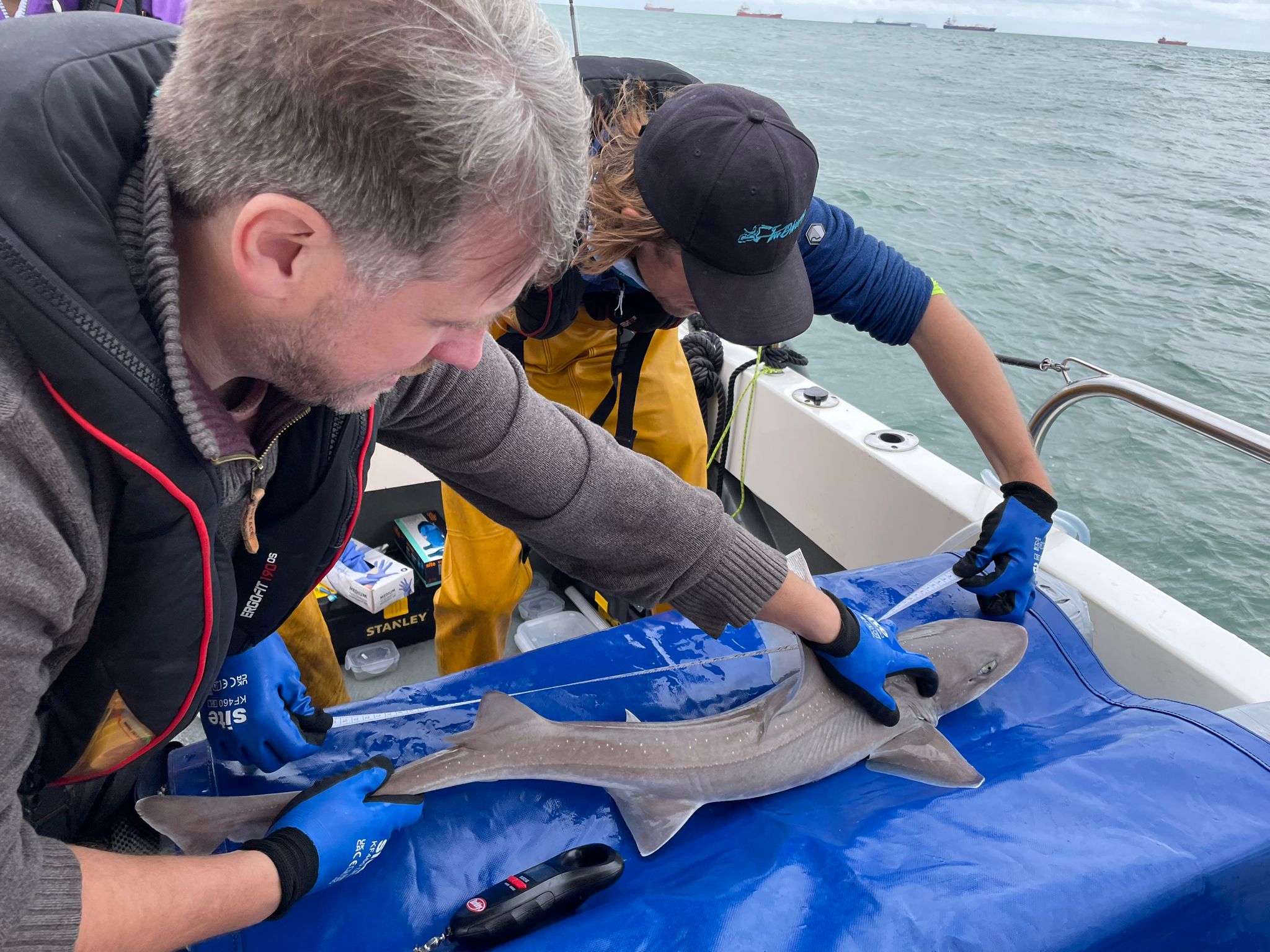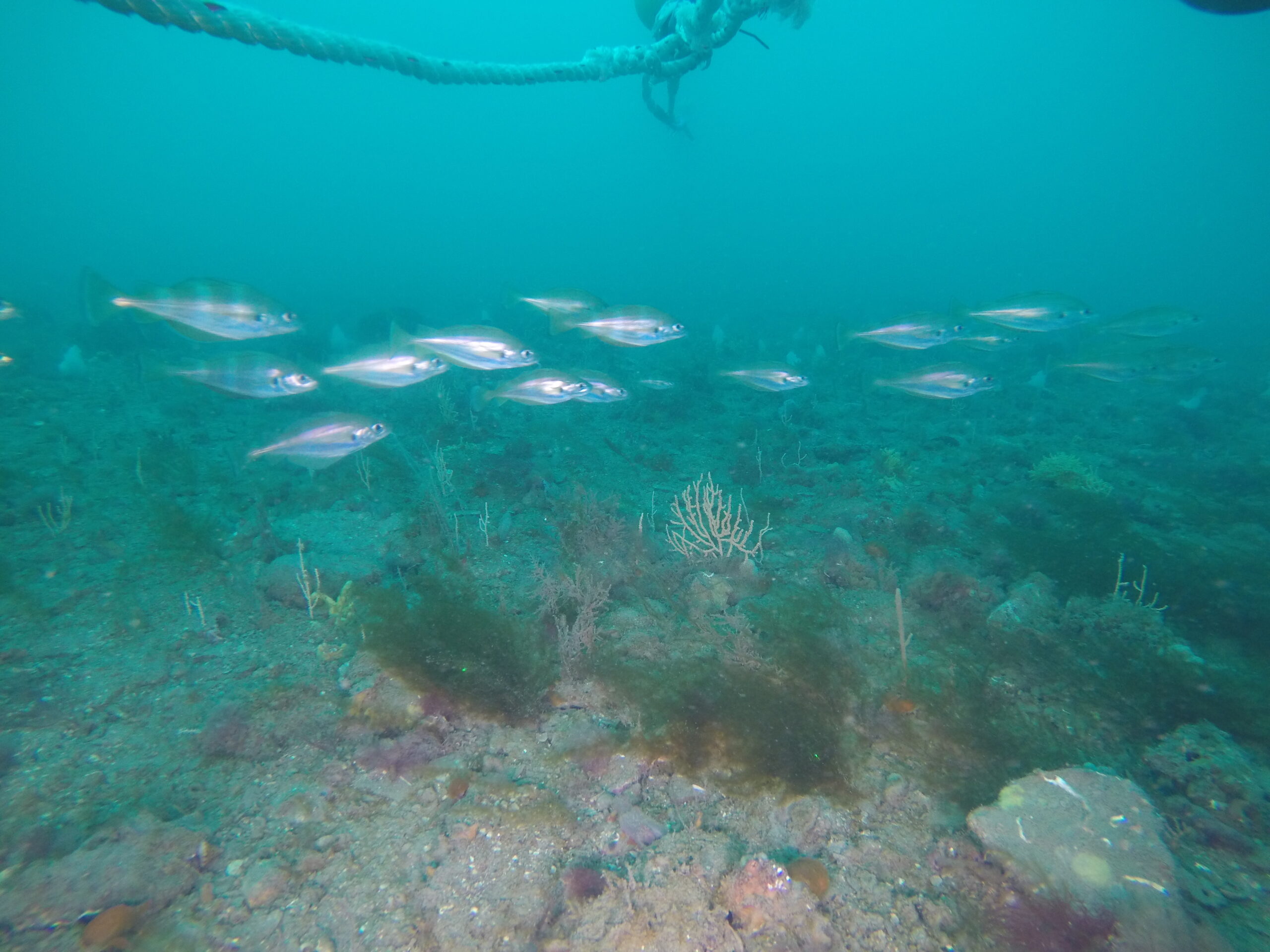Dr Emma Sheehan, from the University of Plymouth, has been researching the ecological impacts of the Lyme Bay Marine Protected Area since 2008, in what is considered to be the best example of a continuous long-term MPA monitoring study in the UK.
Now, Dr Sheehan, together with ‘Ropes to Reefs’ Project Manager Amy Cartwright, gives her thoughts on lessons learned from this whole-site approach to marine conservation, and how state-of-the-art sensor technology can provide the evidence needed to drive ecological recovery for the benefit of fisheries and communities.
Photo: Dr Emma Sheehan
Leading Marine Conservation: Lessons from Lyme Bay and the Fish-Intel Network
By Dr Emma Sheehan, Associate Professor of Marine Ecology, University of Plymouth and Amy Cartwright, Project Manager, Ropes to Reefs FISP, University of Plymouth
As we strive to protect 30% of the ocean by 2030, the lessons learned from the UK’s best example of a continuous, long-term Marine Protected Area monitoring study are clear – conservation works best when it’s inclusive, grounded in evidence, and designed to meet the needs of both ecosystems and people. Insights from two University of Plymouth initiatives are shaping the future of marine conservation: the Lyme Bay monitoring programme and the Fish Intelunderwater acoustic receiver network. These projects highlight how evidence-based approaches can drive ecological recovery while benefiting fisheries and coastal communities.
Lyme Bay as a model for whole-site protection
Since 2008, the Lyme Bay Marine Protected Area has been protected from bottom-towed fishing, creating space for the ecosystem to recover. Over 16 years of continuous annual monitoring, we’ve seen remarkable ecological gains: reef species abundance has increased by 95%, and fish diversity and abundance are up to 400% higher compared to unprotected areas (Davies et al. 2021).
These ecological advances suggest the potential for broader benefits, including burgeoning fish populations that can contribute to sustainable fisheries in surrounding areas. The recovery of commercially valuable species such as lobster and scallops within the protected area demonstrates the value of safeguarding marine habitats for biodiversity and livelihoods alike.
By taking a whole-site approach—protecting the entire ecosystem rather than focusing on individual features—we’ve shown how conservation can support both ecological restoration and the resilience of coastal communities. Lyme Bay offers a hopeful model for balancing marine protection with sustainable resource use (Renn et al.2024).
Photo: Dr Emma Sheehan
Tracking marine connectivity using the Fish Intel Network
The Fish Intel Network expands on the local focus of our Lyme Bay monitoring by exploring how marine species move across larger areas. Using around 200 underwater receivers and data from over 1,500 tagged fish and crustaceans, our acoustic telemetry is uncovering patterns in the movements of species like European bass, pollack, rays and lobster along the south coast of the UK and beyond. Crucially, the work involves close collaboration with local fishing communities and by working together we have identified 13 million individual animal detections across six years of continuous data.
This information is vital for effective fisheries management. By identifying critical habitats, migration routes and seasonal behaviours, we can develop management plans that align with the natural rhythms of marine species. For example, protecting spawning and nursery grounds at the right time to help safeguard key life stages while supporting sustainable fishing practices (Davies et al. 2024).
The need for long-term investment
Despite the progress made, the future of the Lyme Bay project and the Fish Intel Network remains uncertain due to funding challenges. Long-term monitoring and telemetry projects need consistent support to maintain their impact. Without it, we risk losing the data that underpins effective conservation and fisheries management.
Photo: Dr Emma Sheehan
This isn’t just about funding research; it’s about ensuring the resilience of marine ecosystems and the wellbeing of the communities that rely on them. Looking ahead, it will be vital to consider how we can continue to support projects like these to secure a sustainable future for our oceans and coastal communities.
Dr Emma Sheehan and Amy Cartwright will be attending the upcoming Coastal Futures 2025 conference on 29–30 January. Visit the University of Plymouth stand at the conference to find out more about our research on Marine Protected Areas, restorative offshore aquaculture, and the Fish Intel Network.


